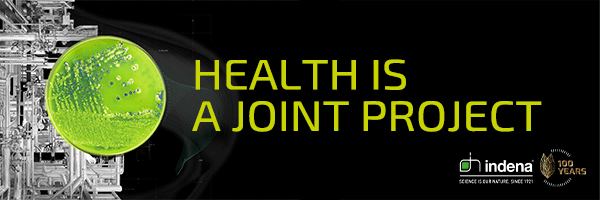Pharmaceuticals
Leveraging control strategies for efficient and compliant drug production 16th November 2020
By By Daniel L. Kirschner, PhD, Director of Analytical Development and Tom Lovelace, Senior Manager of API Manufacturing, Cambrex Corporation

Quality by Design (QbD), an initiative introduced by the US FDA in 2004 to improve product safety, has had a transformative impact on drug manufacturing processes across the industry, encouraging and enabling greater control over drug development processes. By applying QbD methods from process development phases forward, manufacturers gain a clearer understanding of the process, which helps to eliminate challenges early on and allows for greater overall process control.

The application of Quality by Design (QbD) methods in API process development provides a clearer understanding of the manufacturing process and allows for greater overall process control in API manufacture. Pictured is Cambrex Corporation’s process chemistry and API manufacturing facility in Durham, NC, USA.
Building a complete picture of the parameters that control each step during the drug manufacturing process allows for better monitoring and control of individual reactions, and ultimately optimizes the full process. And while every process is unique, there is no leeway in meeting regulatory standards. By implementing control strategies early on, manufacturers can increase drug product quality and regulatory compliance, while still optimizing time and cost resources.
Critical quality considerations
Designing and implementing robust GMP-compliant processes requires clear documentation of parameters. Any parameter that has a large impact over a small range is deemed a Critical Processing Parameter (CPP) in Section 2.2 of an NDA. Parameters can be critical to product quality, or critical to process performance, or both.
Uncovering Critical Quality Attributes (CQAs) of the drug product and exploring the operational limits for individual CPPs that impact those CQAs with early range-finding studies helps to determine the Design Space, a set of parameters and their Proven Acceptable Ranges (PARs) that control CQAs and define manufacturing specifications. When potential CQAs are identified, they should be mapped to the process to identify where each can be assessed.
Targeting the control location of CQAs in the process allows chemists to uncover potential CPPs. Further analysis can determine whether parameters are critical to drug product attributes, and how far they can be stretched while maintaining specifications. CPPs control any CQAs of the drug product, including those of the API, and during this phase of the range-finding study tests can be designed and conducted to assess the impact of variability in parameters and specifications modified accordingly.
It is important to identify CQAs of the drug product and API so that characteristics that impact product quality can be studied and controlled for the life of the process. For example, known impurities that arise during synthesis represent a common class of CQAs that may affect the final quality of the product. Other CQAs might include crystal form or particle size. In the case of impurities, modifications to the process to eliminate or reduce the impurity may avert a critical issue later with product purity or activity, as well as avoid the remediation effort to fix it.
Getting an early start
Working to establish potential CQAs as early as possible supports timely process development. Another benefit of having an increased understanding of CQAs early on is the ability to pinpoint areas of the process that need tighter control to maintain quality, thereby avoiding obstacles later in the process.
For instance, if formulation studies dictate a specific form as a requirement for correct dissolution, chemists can focus analysis on determining the specific parameters of the dissolution process affecting the desired form, including crystallization solvents, heating, and cooling. With that knowledge in hand, optimal specifications can be set, and a range of deviation that still yields acceptable quality can be defined within these parameters.
These can be critical points of discovery in the development process because they can translate to cost savings in manufacturing. Just as the increased understanding reveals areas that require tighter control, it can also expose steps that can tolerate looser parameters. It might allow a manufacturer the flexibility to select a less costly starting material, with the knowledge that each process will maintain an acceptable range of deviation, and the ultimate product quality will not be compromised.
Late-stage quality
CPP and PAR range-finding studies aim to comprehend their effect on the process for end product quality. Late-stage studies seek to understand the impurities during each step in the process and where they are removed. Fate (whether the impurity reacts and changes its chemical structure) and purge (whether the impurity is removed via crystallization, extraction, etc.) studies reveal how specifications at different process stages relate to each other; this is critical to the understanding of the formation of impurities throughout the full manufacturing process.
ICH Standard Q11 emphasizes the importance of understanding impurity formation because a major aspect of process control is knowledge of and establishing the impurities that end up in the drug substance as CQAs. Process evaluation allows for the establishment of appropriate controls for impurities as they progress through multiple process operations, and each of these late-stage QbD studies contributes to readiness for commercialization.
The body of data generated by fate and purge studies supports the justification of impurities in an NDA. They also provide directions for adjusting processes to manage an impurity, including residual solvents or genotoxins, or the evidence that they are purged naturally because of the reactions in the process.
A study partner
Bringing range definition studies online is complex. It can therefore be beneficial for pharma companies to align with a contract development and manufacturing organization (CDMO) to carry out definition studies at the proper scale.
Successful definition studies require close collaboration between the drug manufacturer and the CDMO at the outset. These experiments require careful design and execution, and extensive information is required upfront, including a list of known impurities. At the same time, a thorough, small-scale tech transfer must be performed to reproduce the process. Once known impurities are synthesized, they will be used as reference standards so that they can be spiked into the manufacturing process and traced throughout each step.
Typically, impurities are followed for at least two reaction steps, but in some cases, an impurity is followed all the way through the process to the final drug substance. Data is collected at each step in the process to determine any change to the impurity, including a change in its concentration, whether it altered during formation, or if it was purged from the process. If the impurity undergoes a chemical transformation, the newly formed impurities are also independently tested.
Finding the right range
Fate and purge studies enable greater process control, which is a key component of the QbD model. These studies also challenge the process by deliberately spiking known concentrations of impurities to determine how well they are purged from the process. These experiments allow a broader understanding of the manufacturing process and how impurities are inherently removed to set optimal specifications for starting material and intermediates. However, the scale and magnitude of these studies varies widely. Since all the steps are repeated at multiple stages in the process for multiple impurities, fate and purge studies often create an extensive matrix of data points and validated methods can be used to provide reportable values or to develop ad hoc methods for unique situations. For example, after spiking an impurity, a downstream measurement may require analyzing an extraction solution that is not typically measured. Cases like these require experienced chemists to adapt a method that has been demonstrated as suitable for the intended use.
Equipped with better knowledge of the process, it is easier to predict whether impurities will pose a barrier to producing a clean product and to manage specifications accordingly at the front end. In some cases, the specifications are narrowed to control impurities and their derivatives in subsequent steps, but the reverse scenario can also occur.
For example, a higher percentage of an impurity in the starting material might be justified if validated methods show that it is purged during the process and stretching the allowable limit of an impurity may save significant cost in securing starting material with less stringent purity standards. Determining the levels of residual solvents during fate and purge studies can also be a cost-saving asset for clients. Following solvents through the manufacturing process and demonstrating that they are removed in the final API eliminates the need for testing the end product for the presence of numerous solvents. Similarly, demonstrating that a potential mutagenic impurity (PMI) is not carried through to the final product removes the need to invest resources to develop and commercialize a method to prove that the PMI does not exist in the drug substance.
Large data sets are generated from calculating the percentage of purge at different time points, and these are ultimately translated into specifications for each step. The practical endpoint is a broad set of precise specifications for the entire process to achieve expected quality of product. With control over the process, manufacturers can set specifications upfront for starting material and intermediates rather than relying on batch data.
An investment that pays off
The FDA implemented QbD to ensure that manufacturers have complete control over their process to guarantee product quality. Unfortunately, quality cannot be added in at the end of product development because it is truly a by-product of the process design. Working with a CDMO can offer an extra layer of support in achieving validated methods that demonstrate control of the process and result in high-quality products.
And while it is not uncommon for companies to want to skip study steps where possible to avoid the time and resources for complex analysis of processes, the bottom line is that a more thorough approach more than pays off across the life of a process. There are great rewards in investing in studies that satisfy QbD requirements, including more streamlined regulatory filings and the opportunity to uncover fitting areas for optimization across the process that can deliver unexpected time and cost savings.
Ultimately, range-finding studies yield more than just data points. They are an investment that pays off by pointing toward the best route to achieve optimal quality in drug products to positively impact patients’ lives.


